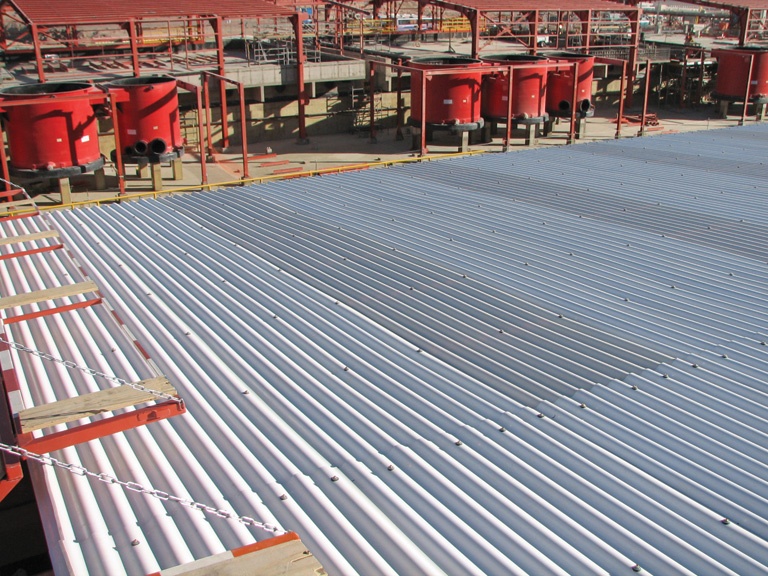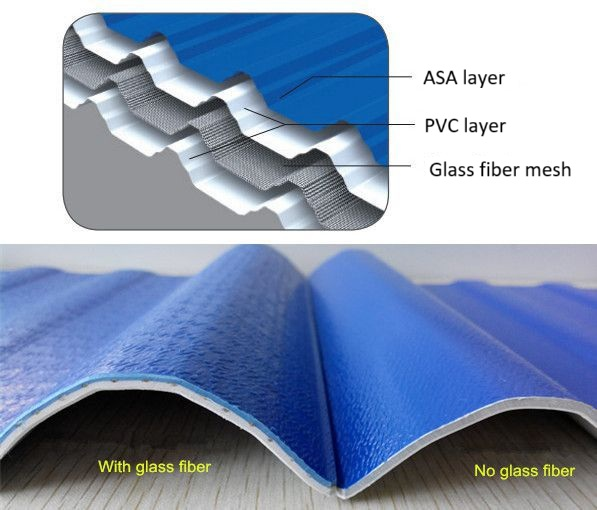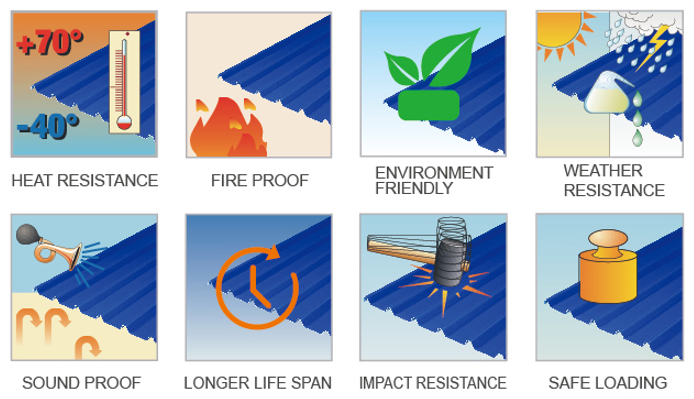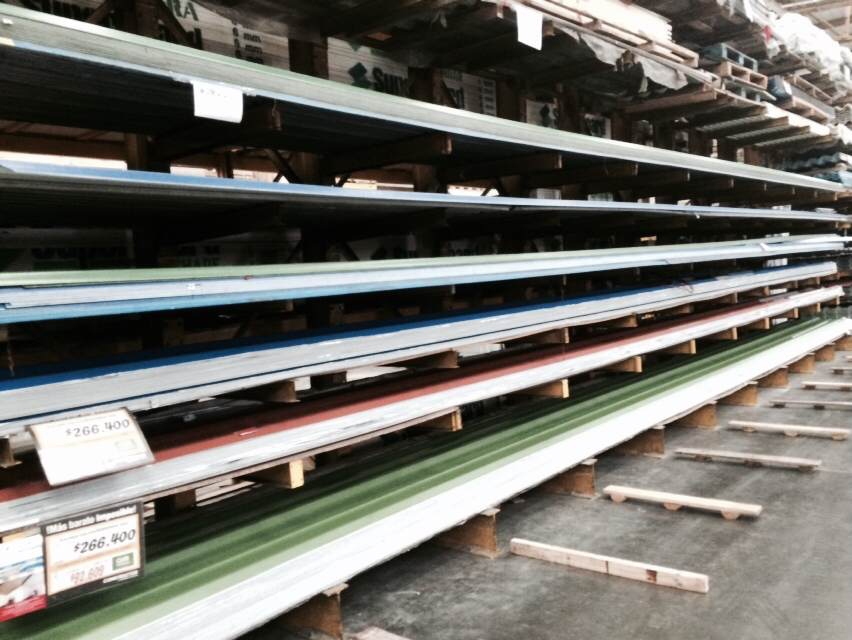
It is a significant long-term cost to choose the right roof for any person who constructs, owns, or designs a building. It is not purely aesthetic. It has a direct effect on the energy usage of a building, the overall solidity of the structure, and future repair bills. There are many products that can be used. There are three, though, that really step forward: old-fashioned asphalt shingles, heavy metal roofs, and new fiberglass-reinforced UPVC sheets.
To make the top decision, you ought to look at each material in detail. Inspect a few significant aspects. For example, look at its durability, how it operates under different weather conditions, how difficult the installation is, and its worth in general for the long term.
Asphalt Shingles: The Conventional Choice
Asphalt shingles are the most popular roofing material in a lot of places. People know them for being easy to find and cheap to buy at first.
- Advantages:What’s great about them? First of all, they are affordable and come in many colors and styles. Plus, installation is pretty simple for most roofers. Replacing a single shingle is also not too hard.
- Limitations:The biggest downside is their shorter life, usually only 15-30 years. What’s more, they can be easily damaged by strong winds, hail, and too much sun. This exposure can cause cracking and make the little granules fall off. They also need consistent upkeep to stop things like algae and moss from growing.
Metal Roofing: The Durable Standard
Metal roofs are usually made from steel or aluminum. They are well-known for being strong and lasting a long time. Because of this, they are a favorite for both businesses and homes.
- Advantages:A metal roof can last an impressively long time, somewhere between 40 and 70 years. They are very good at resisting fire (with a Class A rating), wind, and decay. Also, many new metal roofs have special coatings that bounce sunlight away. This helps make the building more energy-efficient.
- Limitations:But, the upfront cost for a metal roof is much higher than for asphalt. Noise is another major issue. Metal can be incredibly loud when it rains or hails unless you add extra insulation, which costs more money. Furthermore, rust can become a problem. If the protective layer gets scratched or isn’t put on right, the metal underneath can start to rust, particularly near the coast or in factory areas.
This newer composite material is a big step forward in technology. It mixes the natural strengths of UPVC with the solid structure of fiberglass.

- Advantages:This material was designed to fix the main problems of the older options. It is totally rust-proof. It also stands up well to chemical corrosion, so it’s perfect for tough locations. The mixed structure offers amazing insulation from both heat and sound. Its thermal conductivity is only about 1/2000th that of steel, which helps keep buildings much cooler. It can also cut down noise by 25-30 decibels. On top of that, a special ASA layer gives it great UV resistance, which stops the color from fading for more than ten years.

- Limitations:The initial cost might be more than asphalt shingles. It is also a specialized product, so it might not be as easy to find as the more common choices.
Head-to-Head Comparative Analysis
When you compare them on the most important points, you can clearly see the unique benefits of each material.
- Durability and Lifespan:Asphalt shingles last the shortest amount of time. Metal roofs are very tough, but rust can weaken them. Fiberglass reinforced UPVC lasts about as long as metal but won’t rust. This ensures it performs reliably for many, many years.
- Weather and Environmental Resistance:Asphalt can be damaged by wind and sun. Metal is tough but can rust. This is where reinforced UPVC really shines. It offers a solution that is completely waterproof, rust-proof, and stable in the sun, built for big changes in weather.
- Energy Efficiency and Comfort:Metal roofs can save energy, but they make a lot of noise. Asphalt gives you a medium amount of insulation. Reinforced UPVC is the obvious winner in this area. It provides better heat insulation to lower energy costs. It also does a great job of blocking sound, which makes the space inside quieter and more pleasant.
- Total Cost of Ownership:Asphalt is cheap to start with, but you’ll have to replace and fix it more often. Metal costs a lot up front. Fiberglass reinforced UPVC gives you the best value over time. It combines a long life with very little need for upkeep, which cuts down the total cost you’ll pay over the years.
Jieli: A Leader in Advanced Roofing Solutions
When you’re thinking about a modern roofing option like fiberglass reinforced UPVC, the maker’s experience is extremely important. Jieli started in 1992. The company is a trailblazer and one of China’s top manufacturers in this area.
What really makes Jieli different is its dedication to new ideas and making sure its products are high-quality:
- Patented Technology:The fiberglass reinforced UPVC roof sheet is a special technology that only Jieli has patented. This guarantees a level of performance and quality that other companies just can’t copy.
- Rigorous Application of Quality Control:Jieli owns a lab. The lab is certified by the government and CMA approved. They put every batch of products through a full range of tests. They test everything from the raw materials to the final product for things like aging, pulling strength, impact resistance, and weight sustainability.··
- Proven Global Experience:Jieli is well-represented in South America, Europe, the Middle East, and Africa. They have also supplied some big international projects. For example, they supplied a 220-container house project in Venezuela and have been a long-term supplier to Sodimac, the biggest building material chain in Latin America.
-
Thus, when customers buy Jieli, they are not merely buying a product. They are buying a solution that is tested, with years of R&D, the latest patented technology, and tried and tested performance.

Frequently Asked Questions (FAQs):
Q1: How is fiberglass reinforced UPVC sheet a better option compared to conventional UPVC roofing?
A: The trick is in the fiberglass mesh inside. It hugely enhances the material’s pulling strength, impact-resistance, and load-carrying capacity. Together with the support, the sheet is much more stable under the load of heavy snowfall, high winds, and severe temperature changes than regular UPVC.
Q2: Would a metal roof be more expensive than fiberglass UPVC sheets?
A: Generally, yes. When you factor in the material cost and the labor cost of the skilled labor needed to install it, the initial cost of a metal roof is higher. Fiberglass UPVC is less complicated to install. That reduces the labor costs, making it a more economically smart option over its lifetime.
Q3: Can fiberglass UPVC roofing survive harsh weather?
A: Yes, definitely. That’s what it was designed to do. The material is stronger structurally and more resistant to impacts. That also makes it a great option for areas with lots of heavy snow, thick wind, or wild temperature fluctuations.




